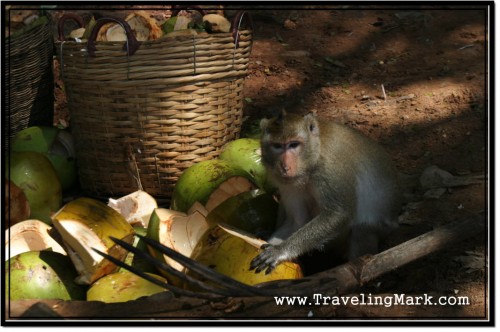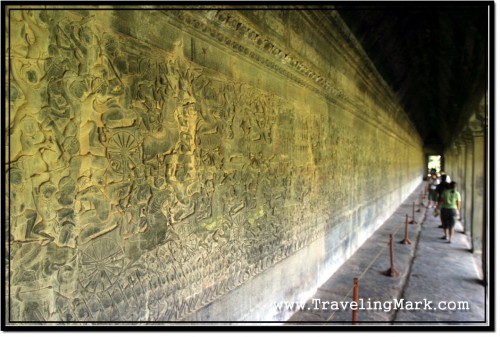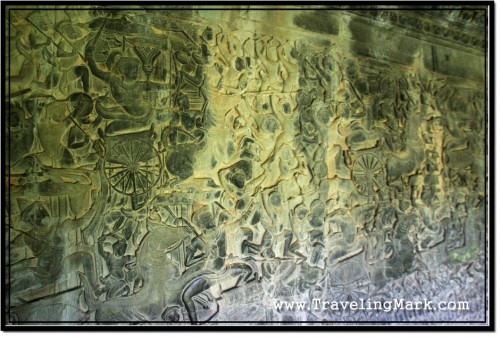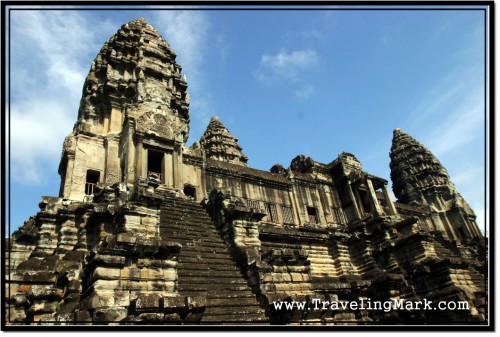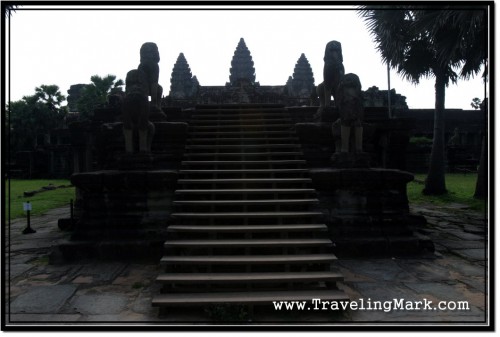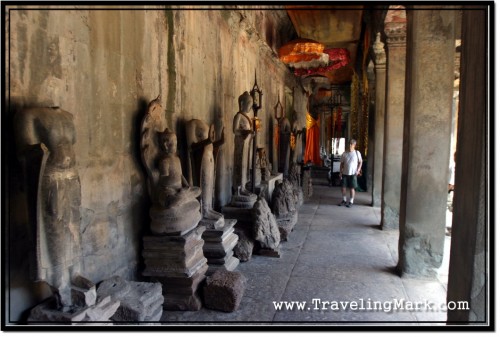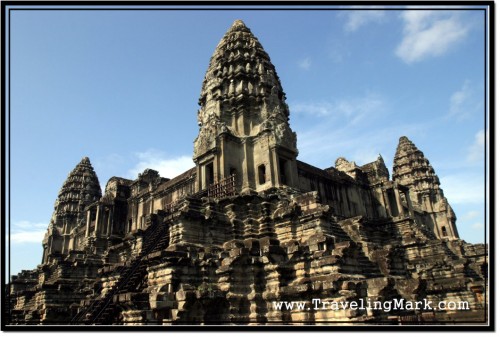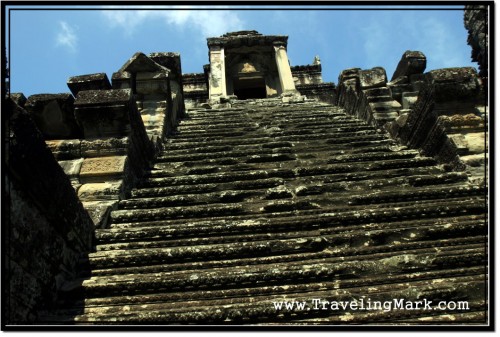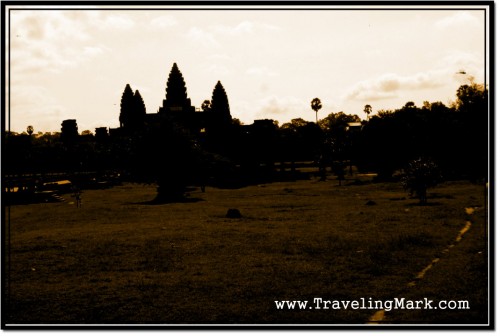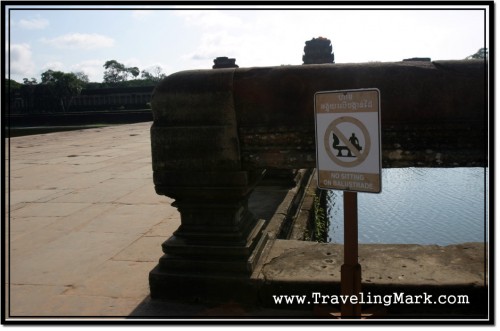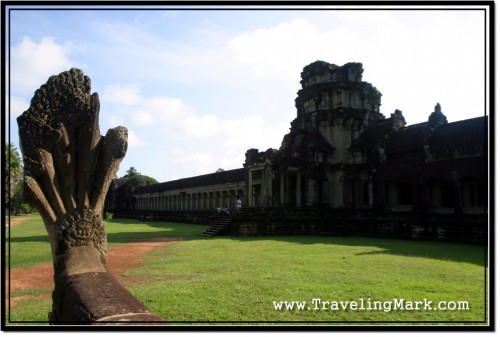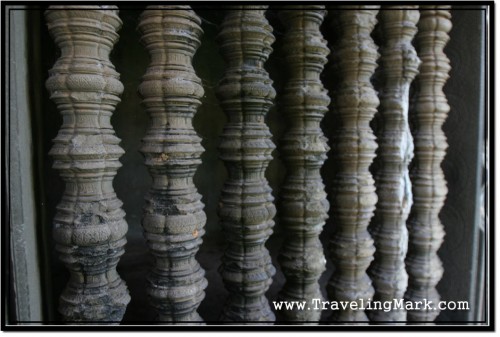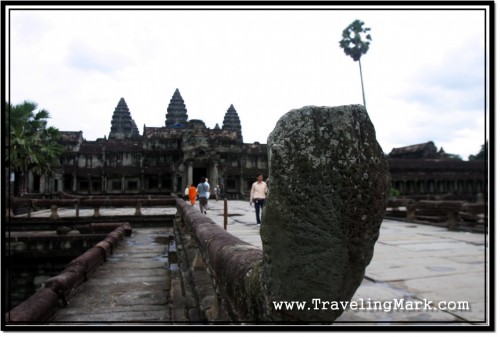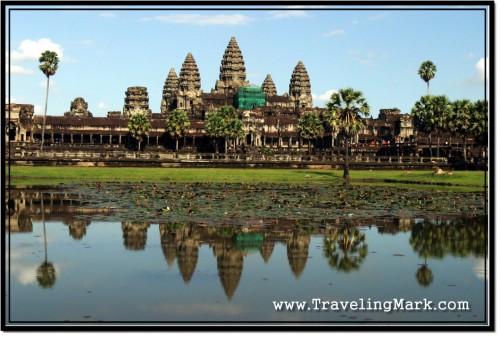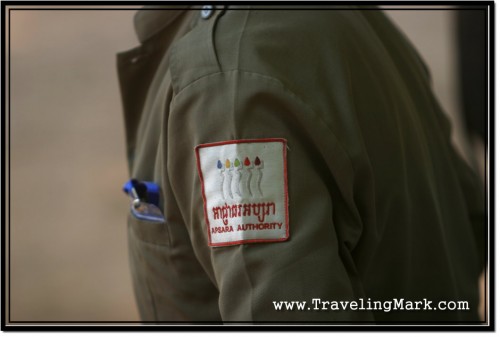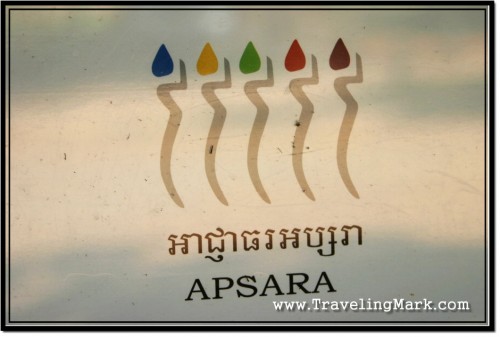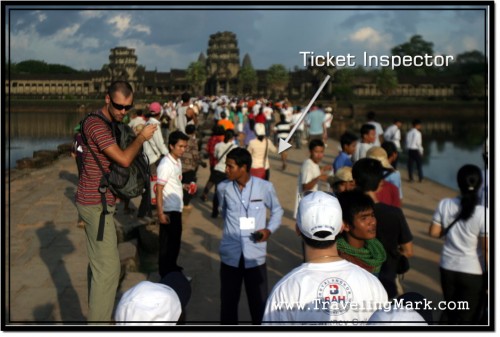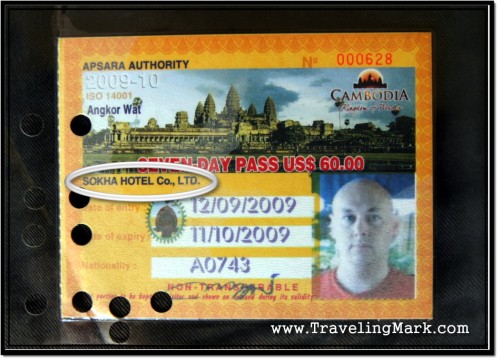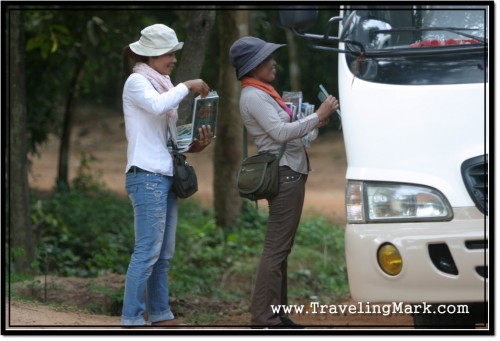Man, this heat really wears you out. I was enthusiastic and ecstatic to see Angkor Wat at last, but I was quickly running out of juice. My clothes were drench with sweat and the supply of water I took with me was exhausted, yet thirst remained unquenched. I knew I was fit enough to pull entire Angkor adventure off on a bicycle, but the heat made it far more challenging than I was ready for. Here I was after just one temple out of hundreds and already parched out of myself. I needed an escape from the heat and something to both rehydrate my moisture stripped body and boost my energy. I desperately needed a coconut so I can replace lost minerals with its isotonic, re-energizing water.
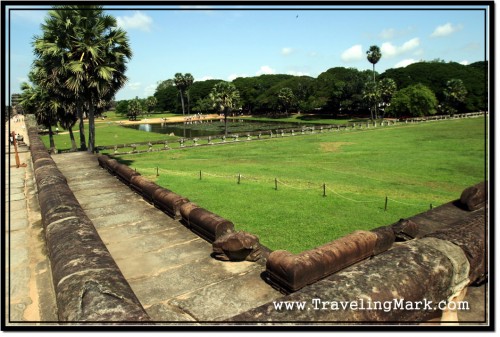
Line of trees along the northern exterior wall of Angkor Wat hides a line of shops full of desperate touts who make a point of earning money on every foreigner who comes to sight. Entering their reign meant giving myself in to their relentless harassment, but I had to. I needed a shade of the trees and needed a stall with cold coconuts so I can cool myself from within and refresh my stagnating vigor.
As I walked down the stairs from the Terrace of Honors, I already had a few dozen kids running towards me with postcards, scarves, bootleg books, and other useless junk they were determined to beat me into buying no matter what. Already armed with strong ability to resist their arguments as to why I can’t afford to not buy from them, I adamantly insisted that I didn’t need anything of what they had to offer. They instantly continued to offer anything and everything I have not yet said “No” to, yet I knew that if I tell any of them that I wanted a coconut, they would take me to any stall where I would have to pay higher than normal price to also cover for their commission.
I continued walking along the stalls keeping a keen eye on what which shop had to offer and when I saw the first one with coconuts, I asked how much they were. She said 3,000 Riel which instantly meant loss of potential business. I could appreciate that they were trying to rip each new tourist off as much as they could, but I wasn’t ready and willing to play their game. I saw there were many stalls selling coconuts so I was just gonna walk along and would refuse to buy from anyone trying to rip me off. Some went as far as to ask $1 for a coconut which only affirmed my position of not giving them my business. First shop to quote me a fair price for coconut (2,000 Riel or $.50 US) would get my business, which would involve at least two coconuts and a large bottle of water.
Cambodians focus too much on attempts to make quick and easy buck the first time a customer is there. Such things as building continuous relationship with a customer and striving for repeat business are unknown to them. They just try to rip you off as much as they can, even though they know sooner or later you are going to find out that they ripped you off and you will never buy from them again. This is a bad business practise and results in lower earnings overtime. Understanding the importance of repeat, loyal customers could make a difference between how long the merchant stays in business. Cambodians fail to recognize this important aspect of business and work strongly against it.
Being a man, I was happy to have been quoted a fair price for a coconut by a stall with a couple of very pretty Cambodian girls. Dripping with sweat, obviously visibly exhausted from heat and mentally drained after endless attempts to rip me off while dozens of touts didn’t give me a second of peace, I took a seat on an offered chair and asked for a coconut from the fridge (fridge at Angkor Wat where at the time of my visit was no electricity was a plastic box with large cubes of ice which keep the content, such as bottled water, soft drinks or coconuts cool).
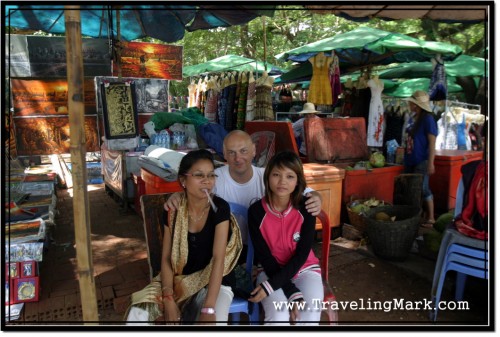
My first coconut went down like I haven’t had anything to drink in weeks. I instantly asked for another one and a large bottle of water. I also needed a break from the sun and since there were no air-conditioned rooms to have, sitting in the shade of large trees was the best it got. Cooling off inside Angkor Wat is no solution to being hot. It shelters you from the sun, but ancient stones radiate as much heat as the sun so stepping inside for a minute to relax will drench you with sweat as much as sitting outside in direct sun.
Trees provided the shelter from the sun but also some exposure to cooling breeze. There is very little of it in Cambodia, but at least I was standing a chance, unlike it is inside the temples.
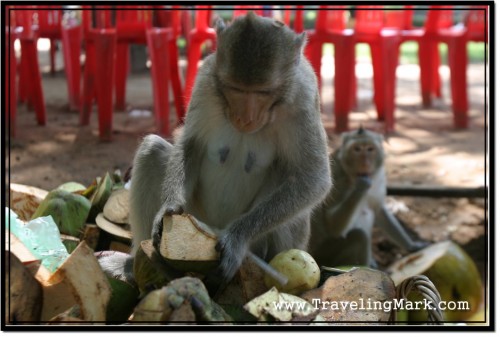
As I was sitting there drinking my coconuts and water, I had the kid touts continue approaching me. Having a foreigner seated at a coconut is a good opportunity to offer junk as he’s not gonna run away. That’s their thinking. However, as much as I was getting fed with all this abuse, while I was sitting there catching my breath, I got a different perspective on the hardship people from surrounding villages go through on day to day basis.
I spoke with the girls from the stall where I bought the coconuts and many things took a whole new image. I already bought from them so they had no more reason to harass me, except from occasional attempts with upsales, but as I was sitting there, hustling turned into friendly chat. I really needed a good break so I spent about an hour at their shop recharging. I explained them the importance of building quality relationships with customers and what value repeat business means compared to one time increased gain, and told them that if they tried to overcharge me like so many stalls before them attempted to, they would not get any business from me. I also explained that this simple act of quoting me a fair price will result in me seeking them again next time I’m in the neighbourhood and in need of a coconut.
This is what previous stalls failed to realize and it was gonna costs them many dollars in lost profits. Instead, all of the money I was going to spend at Angkor Wat would go to to my new friends who showed decent business sense and kept me comfortable and amused while I was in their care.
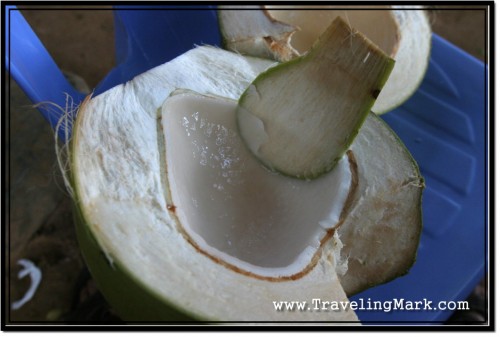
Before I left, I had yet one more coconut and bought another bottle of water from them. I drank six coconuts that day, five were from these girls. Three at this first visit and two later on when I was on my way back to Siem Reap. And it didn’t end there. Each day thereafter, during my seven days long adventure exploring Angkor Archaeological Park I started and finished my day by going to Angkor Wat to have a coconut and buy a bottle of water from these girls. This is what loyal customer base does to you. You never know how long who is going to stay in your neighbourhood. Don’t try to rip them off as much as you can with their first purchase thinking you will not see them again. Value of repeat business is immense. Many Cambodiian business need to realize that and act accordingly.
